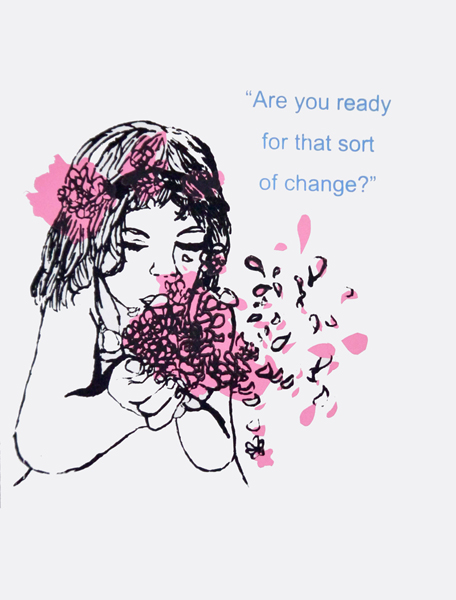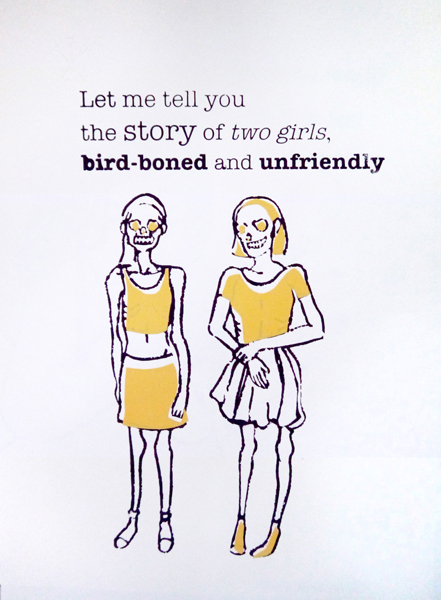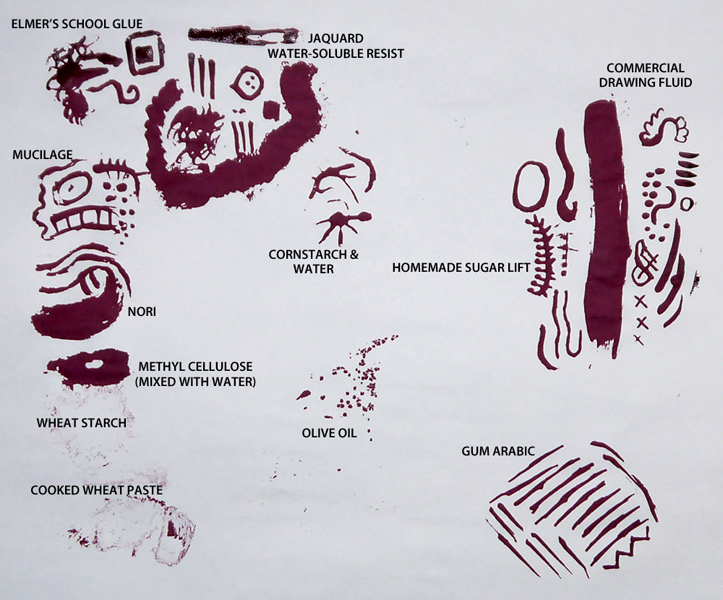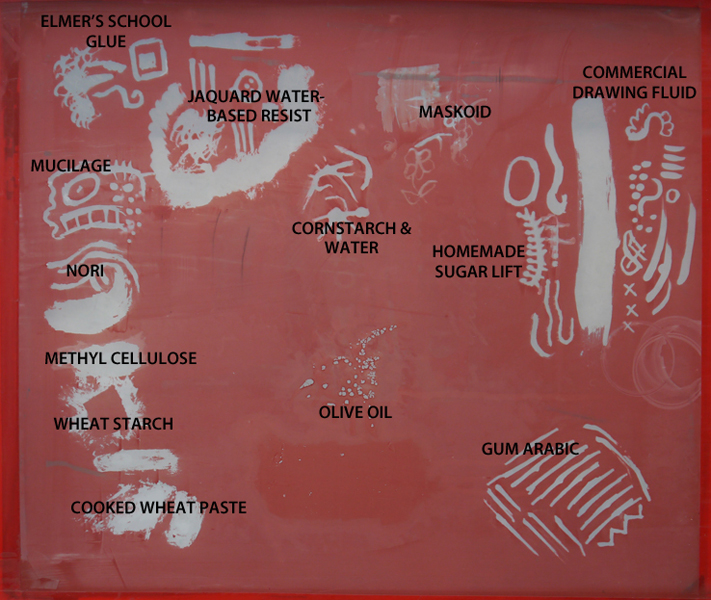By Stephanie Stigliano
Speedball Drawing Fluid and Screen Filler are a marvelous pair of products. By using the two together it is possible to get lively, gestural screen prints. However, recently I ran into a problem while teaching screen printing. The drawing fluid we used was contaminated. It would have been easy to blame someone else. But that wouldn’t help solve the problem! Somehow the chemistry had changed (the color looked suspiciously like someone had added diazo powder). It wasn’t behaving properly. A failed demonstration in front of teenagers certainly provided a catalyst for more research and experimentation.
Sugar lift solution seems a lot like drawing fluid, so I thought I’d start my experiments with that. Starch resists and stencils have been used to print fabric in many cultures for centuries, so I wanted to try those, too. What were the necessary properties of drawing fluid? It must be non-toxic, inexpensive, and able to be washed out with cold water. I tried what I had on hand: my homemade sugar lift*, Elmer’s School Glue, gum Arabic, Nori paste (rice flour), wheat paste (raw and cooked), corn starch, Maskoid (a resist for watercolor), olive oil and the old-fashioned glue, mucilage. **
Maskoid was very difficult to remove from the mesh; olive oil didn’t work either. Wheat paste didn’t work too well, but cornstarch mixed with water worked very well. Gum Arabic, Elmer’s school glue, mucilage and the homemade sugar lift solution all worked as well as the commercial drawing fluid.
The fresh, painterly look of the drawing fluid brings spontaneity to the flat layers of ink. It contrasts well with the look of photo-processes and cut stencils. My students like the extremely thin lines they can create with .005 Microns, but they will have to wait until we start our next project: copper plate etching, to get lines that delicate.

Poster by Minkyung Catherine Koo, sentence by Gabe Braunstein, students at Walnut Hill School for the Arts, Natick, MA, 2015

Poster by Sayoung Nicole Park, sentence by Siena Rush, students at Walnut Hill School for the Arts, Natick, MA, 2015
*Sugar lift solution:
10 parts Karo
3 parts water based paint-basically enough to color it so you can see the solution
3 parts dish soap
**Mucilage:
6 tablespoons white vinegar
½ oz. unflavored gelatin ( 2 packets)
Mix together and let sit until spongy—5 minutes.
Put the jar over steaming water and stir to dissolve. It sets as it cools; it can be re-softened by putting the
jar in a steaming bowl of water.

